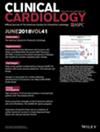Right Heart Contrast Echocardiography Microbubble Count and Migraine Severity: A Dose–Effect Relationship Study
Abstract
Objective
This study aimed to investigate whether a dose–effect relationship exists between the number of microbubbles detected on right heart contrast echocardiography (RHCE) and the clinical severity of migraine.
Methods
We conducted a cross-sectional study of 190 adult patients diagnosed with migraine who underwent RHCE. Microbubble counts were categorized into four grades per frame (Grades 0–III) based on their appearance in the left atrium within three to six cardiac cycles after right atrial opacification. Migraine severity was assessed using the Migraine Disability Assessment (MIDAS) score and the Headache Impact Test (HIT-6). Multivariate linear regression was used to evaluate the association between microbubble grades and migraine severity. The predictive ability of the model was assessed using the residual plots and variance inflation factors. Sensitivity analyses were performed to test the robustness of the findings by adjusting for potential confounders.
Results
A clear dose–response relationship was identified, with patients in higher microbubble-grade groups demonstrating significantly elevated MIDAS and HIT-6 scores (p < 0.001). Patients with Grade III microbubbles reported the highest mean MIDAS (18.2 ± 6.1) and HIT-6 (64.8 ± 4.9) scores, compared to those in lower grades (p < 0.001). Regression analyses confirmed that the higher microbubble burden independently predicted migraine severity (β = 0.46, p < 0.001). Sensitivity analyses yielded consistent findings.
Conclusion
Our results suggest a notable dose–effect relationship between RHCE microbubble count and migraine severity. These findings highlight the potential role of right-to-left shunting as a physiological contributor to migraine.


 求助内容:
求助内容: 应助结果提醒方式:
应助结果提醒方式:


